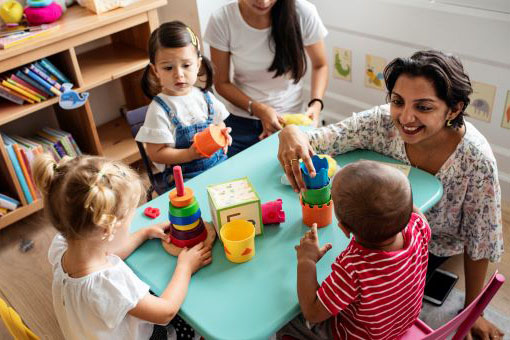Evidence-based home visiting programs positively impact these strategy goals:
SUMMARY
Evidence-based home visiting programs are an effective state strategy to impact:

Participation in evidence-based home visiting programs leads to small but positive impacts on parenting skills, but less consistent evidence exists for impacts on other important child and family outcomes. More research is needed to understand which aspects of home visiting contribute most to positive outcomes. As a state strategy, providing evidence-based home visiting programs is effective for improving parenting skills, but current research does not support a specific state policy lever to guide the most effective implementation of programs.
Voluntary parenting programs vary in format, the specificity of their goals, their target populations, and in the extent to which they have demonstrated effectiveness for improving parenting behavior, skills, and knowledge. Home visiting programs, which provide support and education to parents in the home through a trained professional (e.g., nurse or social worker) or paraprofessional, have a growing evidence base and have expanded rapidly over the last decade as a state-based investment in supporting parents and children. Although research has examined the impact of home visiting on a range of outcomes, the scope of this review is intentionally limited to parenting outcomes, the policy goal for which the most evidence on home visiting exists. States differ in how they fund home visiting (i.e., state and/or federal sources), their level of investment, and how they define the scope and goals of home visiting programs.
Download the Complete Evidence Review
Evidence-Based Home Visiting Programs Evidence Review (PDF)
Download the 2-Page Summary
Summary of the Rigorous Research on Evidence-Based Home Visiting Programs (PDF)
Recommended Citation:
Prenatal-to-3 Policy Impact Center. (2023). Prenatal-to-3 policy clearinghouse evidence review: Evidence-based home visiting (ER 09D.0923). Peabody College of Education and Human Development, Vanderbilt University. https://pn3policy.org/policy-clearinghouse/evidence-based-home-visiting
Updated October 2023



